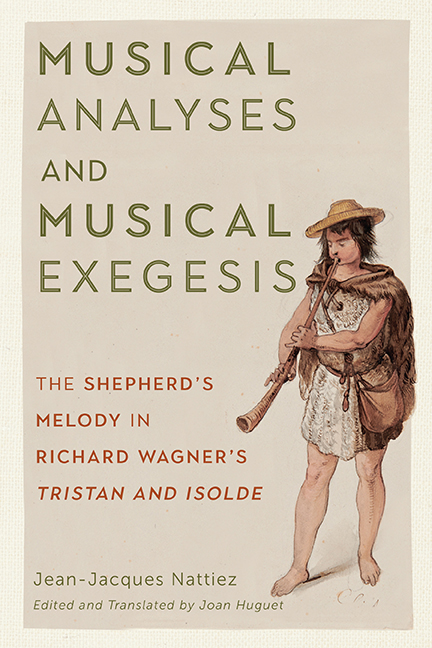 Musical Analyses and Musical Exegesis
Musical Analyses and Musical Exegesis Book contents
- Frontmatter
- Dedication
- Contents
- Foreword to the French Edition
- Preface
- Introduction: The English-Horn Solo, My Approach, and Models of Analysis and Musical Meaning
- Part I Immanent Analysis of the English-Horn Solo’s Musical Structures
- Part II Esthesic Analysis
- Part III Poietic Analysis
- Part IV Hermeneutics
- Conclusion: The Validity of Structural Analyses and Interpretations
- Bibliography
- Index
3 - Paradigmatic Analyses
Published online by Cambridge University Press: 02 June 2021
- Frontmatter
- Dedication
- Contents
- Foreword to the French Edition
- Preface
- Introduction: The English-Horn Solo, My Approach, and Models of Analysis and Musical Meaning
- Part I Immanent Analysis of the English-Horn Solo’s Musical Structures
- Part II Esthesic Analysis
- Part III Poietic Analysis
- Part IV Hermeneutics
- Conclusion: The Validity of Structural Analyses and Interpretations
- Bibliography
- Index
Summary
Principles of Paradigmatic Analysis
Nicolas Ruwet introduced a methodology for paradigmatic analysis in his groundbreaking 1966 article “Méthodes d’analyse en musicologie.” This article formalized an analytical method that he had previously employed to describe the phenomenon of duplication in the music of Claude Debussy, including the Prelude to Pelléas et Mélisande. In his 1966 article, Ruwet illustrated paradigmatic analysis through the study of medieval monody, making the method particularly suited to the analysis of the English-horn solo. It was in his analysis of Debussy's Prelude, however, that Ruwet demonstrated how paradigmatic techniques allowed him to break apart the work's homophonic groupings, in which rhythmically consistent harmonies accompany the melody. As a result of this theoretical extension, it became possible to paradigmatically analyze the entirety of the western musical canon.
To introduce Ruwet's methodology, I will discuss his oft-cited paradigmatic analysis of a fourteenth-century Geisslerlied. In this analysis, Ruwet rewrites identical or analogous units in columns, leaving blank spaces as necessary to preserve the temporal ordering of the work. As a result, this paradigmatic table displays the entirety of the work when read from left to right and top to bottom, while also revealing its structural organization (see ex. 3.1).
The principles of paradigmatic analysis are straightforward:
1. The paradigmatic table reproduces the syntagmatic progression of the Geisslerlied's constituent units vertically along four paradigmatic axes, in a manner which emphasizes the repetition of certain units (a, c, d, d1) as well as the transformation of certain pairs (A and Aʹ, b and bʹ). For example, we can see that the expected motion from B♭ to A on beats 3–4 of unit b is both melodically and rhythmically altered in its second iteration: the B♭ on beat 3 becomes an A, and the two eighth-note As on beat 4 become a single quarter note. A paradigmatic table thus brings identical or analogous units to the fore, applying an internal seriation process to a work.
2. In order to unpack a work's transformational relationships, we must separately examine each parameter, a process that I refer to as parameterization.
- Type
- Chapter
- Information
- Musical Analyses and Musical ExegesisThe Shepherd's Melody in Richard Wagner's <I>Tristan and Isolde</I>, pp. 117 - 144Publisher: Boydell & BrewerPrint publication year: 2021
